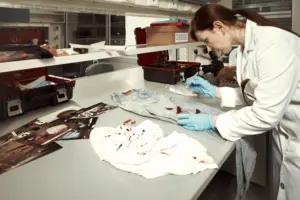Introduction
What is crisis negotiation?
Crisis negotiation is a process of communication between law enforcement personnel and a subject in an effort to achieve a peaceful resolution during a critical incident. This type of negotiation generally takes place when an individual has taken hostages or barricaded themselves in a location and is armed with deadly weapons.
The goals of crisis negotiation are to safely resolve the incident with the least possible loss of life or injury, and to bring the subject into custody for criminal prosecution. Crisis negotiators must be able to quickly build rapport with the subject, defuse the situation, and negotiate a peaceful resolution.
In order to be successful, crisis negotiators must have a thorough understanding of human psychology and communication techniques. They must also be able to think quickly on their feet and remain calm under pressure.
What are the goals of crisis negotiation?
The primary goals of crisis negotiation are to:
- Save lives
- Prevent injuries
- Bring a peaceful resolution to a critical incident
Crisis negotiation is a collaborative process between law enforcement and mental health professionals that is designed to de-escalate a volatile situation and bring about a peaceful resolution. Crisis negotiation teams are usually deployed when an individual is in crisis and poses a threat to themselves or others.
The goals of crisis negotiation are to save lives, prevent injuries, and bring about a peaceful resolution to the incident. In order to achieve these goals, negotiators must establish rapport with the subject, diffuse the situation, and gather information that can be used to resolve the crisis.
The basics of crisis negotiation
Law enforcement officers must be able to de-escalate a situation without using force, and sometimes that includes a negotiation. Although it’s not always possible to negotiate with everyone, it’s a good skill for patrol officers to have in their toolbox. Let’s take a look at what crisis negotiation is and how it can be used.
The three phases of crisis negotiation
Crisis negotiation is a process of communication between law enforcement and an armed, often barricaded, individual(s) with the goal of peacefully resolving the incident.
Crisis negotiation is conducted in three phases: pre-incident, incident, and post-incident. Each has its own objectives, strategies, and tactics.
- The pre-incident phase is focused on preparing for future incidents through training and building rapport with the community.
- The incident phase is when law enforcement makes contact with the individual in crisis and works to de-escalate the situation.
- The post-incident phase is when law enforcement debriefs and analyzes the incident to learn from what happened and make improvements for future situations.
The importance of active listening
Crisis negotiation is a process of communication between law enforcement and an armed, barricaded, or otherwise dangerous subject, in order to effect a peaceful resolution. This process is distinct from regular patrol duties in several key ways. First, the goal of crisis negotiation is to diffuse the situation and bring about a peaceful resolution, rather than to make an arrest. Second, crisis negotiation requires active listening and an empathetic attitude in order to understand the motives of the subject and find a way to resolve the situation peacefully.
Active listening is a key element of successful crisis negotiation. It involves both paying attention to what the other person is saying and trying to understand their perspective. In order to do this, negotiators must be able to put aside their own biases and prejudices, and focus on finding common ground with the subject. This can be difficult, but it is essential in order to find a peaceful resolution.
The use of verbal de-escalation techniques
The proper use of verbal de-escalation techniques can often mean the difference between a volatile situation ending peacefully or with violence. In order to best defuse a tense encounter, patrol officers must understand how to properly communicate with an agitated individual. This requires more than just a basic understanding of human psychology; it necessitates knowing how to read both verbal and nonverbal cues, and then respond in a way that diffuses the situation.
One of the most important things to remember when using verbal de-escalation techniques is that the goal is not to reason with the individual, but rather to lower their level of arousal. This can be accomplished by remaining calm and using a soft, slow voice. It is also important to avoid making any sudden movements or appearing threatening in any way. Instead, officers should try to maintain an open posture and make themselves as non-threatening as possible.
Additionally, officers should avoid making any promises that they cannot keep or saying anything that could be interpreted as a challenge or an insult. They should also resist the urge to interrupt or argue with the individual, as this will only serve to escalate the situation further. The goal is to simply keep the lines of communication open and provide the individual with a feeling of being heard and understood. Only by maintaining a calm and respectful demeanor will officers be able to successfully defuse even the most volatile of situations.
Advanced crisis negotiation strategies
Advanced crisis negotiation strategies for patrol officers often focus on the need to buy time. In many cases, the patrol officer is the first law enforcement professional to arrive on the scene. The officer must quickly and calmly assess the situation, determine the best course of action, and keep the situation from escalating.
The T.E.A.R. technique
The T.E.A.R. technique is a crisis negotiation strategy developed by the FBI. It is designed to help law enforcement officers resolve hostage and other types of high-stress situations.
The T.E.A.R. technique consists of four steps:
- Talk to the subject in a calm and respectful manner;
- Establish rapport with the subject;
- Assist the subject in identifying and expressing their emotions;
- Respond to the subject’s emotional needs in a supportive way.
The T.E.A.R. technique has been shown to be effective in reducing stress levels and facilitating positive outcomes in crisis situations.
The use of body language
Body language is perhaps the most important tool in a negotiator’s toolkit. The way we stand, the position of our arms, and even the way we make eye contact can all be used to convey messages‚ both verbal and nonverbal‚ to the person we’re talking to.
When negotiators are trained in advanced body language techniques, they can use these techniques to:
- Calm an agitated individual
- De-escalate a volatile situation
- Build rapport
- Show empathy
- Gain compliance
The importance of staying calm
Officers who react emotionally to the demands of a barricaded subject often make the situation worse. The most important rule in these situations is to remain calm. This can be difficult, but it’s essential in order to diffuse the situation. When officers become emotional, it makes the subject more agitated and less likely to surrender peacefully.
In order to stay calm, officers need to be prepared both mentally and physically for the demands of a barricade situation. It’s important to have a clear head so that you can think logically about the best way to resolve the situation. You also need to be in good physical shape so that you can maintain your composure for an extended period of time.
Conclusion
In this research, I found that there are three main themes in crisis negotiation training for patrol officers: emotional intelligence, communication, and mental health. I also found that there are some different methods used in crisis negotiation training, but the main methods are the use of simulations and role-playing.
The benefits of crisis negotiation
Crisis negotiation is a rapidly evolving field of law enforcement, with new tactics and strategies being developed all the time. However, there are some clear benefits to crisis negotiation that have been borne out by research and experience.
Crisis negotiation can:
- De-escalate a potentially violent situation
- Increase the likelihood of a peaceful resolution
- Minimize the use of force by law enforcement
- Reduce the likelihood of injury or death to officers, suspects, and civilians
- Build trust and goodwill between law enforcement and the community
These benefits have been shown time and again in studies and real-world situations. If you are a patrol officer, it is worth your time to learn more about crisis negotiation and how it can help you keep your community safe.
The importance of training
As the first line of defense, patrol officers are often the ones who have to talk to people in crisis situations. It’s important that they be trained in how to de-escalate these situations, so that everyone involved can stay safe.
Unfortunately, not all officers receive this kind of training. In many cases, it’s not even part of the curriculum at police academies. This needs to change.
Officers should receive comprehensive training in how to handle crisis negotiations. This should include role-playing exercises, so that they can practice what theyv’e learned in a safe and controlled environment.
With the right training, patrol officers can make a real difference in how these situations play out. There’s no one-size-fits-all solution, but every little bit helps.





